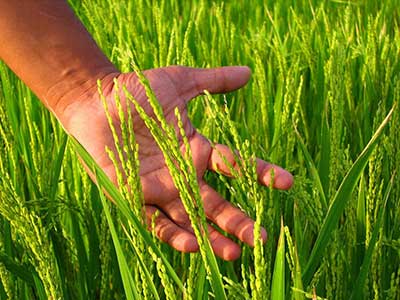Relevance: GS-3: Issues related to direct and indirect farm subsidies and minimum support prices;
Key Phrases: Situation Assessment Survey of Agricultural Households, National Sample Survey Office, Farmers are Turning Into Daily Wage Labourers, Doubled Cultivation Costs, Agriculture Infrastructure Fund, Farm Mechanisation.
Context:
- As per the Situation Assessment Survey of Agricultural Households, conducted by the National Sample Survey Office (NSSO) during the 77th round (January-December 2019), the average monthly income per agricultural household, from all sources, was estimated at ₹10,218 when compared to ₹6,426 in 2012-13.
- In other words, the farm income had risen by 59 percent till 2019.
- But, in this period, their earnings came more from wages than from crop production.
What is the Source of Farmers’ Earnings?
- In 2012-13 (during the 70th NSS round), the average monthly income of agricultural households was ₹6,426, of which ₹2,071 came from wages, ₹3,081 came from crop production and cultivation, ₹763 from farming of animals, and ₹512 from a non-farm business.
- The 77th NSS round data, in 2018-19, showed that the average monthly income has gone up to ₹10,218, of which the highest income comes from wages (₹4,063), followed by income from crop cultivation and production (₹3,798).
- There is a substantial rise in income from animal farming (₹1,582 from ₹763).
Reasons for The Distress of Farmers:
- The farmers are earning comparatively higher income from non-farm businesses and are leasing out land.
- However, the farmers say that the cultivation costs have almost doubled, and their income is not commensurate with the rising inflation.
- Income from wages was 32 percent in 2012-13.
- It was recorded to be 40 percent in 2018-19. This implies that farmers are turning into daily wage labourers.
Does the Increase in Production Result in An Increase in Income?
- Increase in Budget:
- As per the Ministry of Agriculture, in 2013-14, the budget allocation for the Department of Agriculture was ₹21,933.50 crore.
- This got increased by more than 5.5 times to ₹1,23,017.57 crore in 2021-22.
- Increase in Food Production:
- Foodgrain production increased to the highest ever, from 265.05 million tonnes in 2013-14 to 305.43 million tonnes in 2020-21 (third advance estimate).
- Increase in horticulture production:
- Horticulture production has increased from 280.99 million tonnes in 2014-15 to 320.48 million tonnes in 2020-21 (second advance estimate), the highest ever for the horticulture sector.
- However, the NITI Ayog report on Doubling Farmers' Income states that in some cases, growth in output brings an increase in farmers’ income, but in many cases, the farmers’ income did not increase significantly with the increase in output.
Are the Farmers Benefiting From the Government Schemes?
- Increase in MSP:
- The government had increased the MSP for all the mandated Kharif, Rabi, and other commercial crops with a return of at least 50 percent on the overall India-weighted average cost of production from 2018-19.
- The NSS 77th round shows that the percentage of output sold by households under the MSP ranges between 0 to 24.7 percent (except sugarcane).
- Awareness about the MSP and output sold under it, is dominated by paddy and wheat growing households
- With over 14 percent of 14.6 crore landholding farmers (2015-16) getting benefits from the MSP, most farmers are out of the MSP net and continue to sell their produce below the MSP.
- PM- KISAN scheme:
- The government launched the PM-KISAN in 2019 to provide ₹6,000 per year in three equal installments. A total of ₹1.8-lakh crore has been released to over 11.7 crore farmer families.
- This benefit does not necessarily go into the capital expenditure in farming as small and marginal farmers struggle to fulfil their basic needs, such as their children’s education and health expenses.
What About Insurance, Credit, And Infrastructure?
- Insurance:
- About 29.29 crore farmer applicants enrolled themselves under the Pradhan Mantri Fasal Bima Yojana (PMFBY), launched in 2016.
- Over 8.99 crore farmer applicants have received claims of over ₹1,03,903 crore.
- During this period, farmers paid nearly ₹21,448 crore as premium, against which claims of over ₹1,03,903 crore (provisional) were disbursed.
- For every ₹100 of premium paid by farmers, they have received ₹484 as claims.
- Yet, many States, such as Maharashtra, are now opting out of the scheme saying that farmers are unhappy with the claim settlements.
- Institutional credit for the agriculture sector had increased from ₹7.3-lakh crore in 2013-14, with a target to reach ₹16.5-lakh crore in 2021-22.
- Agricultural Mechanisation:
- For agricultural mechanisation, from 2014-15 to 2021-22, amount of ₹5,130.61 crores has been allocated.On subsidy, about 13.78 lakh machines and pieces of equipment were provided to them.
- About 16,007 custom hiring centres, 378 high-tech hubs, and 16,064 farm machinery banks have been established.
- But the farm mechanisation is posing a major threat to agricultural labourers.
- Infrastructure :
- Under the Agriculture Infrastructure Fund, the government had mobilised ₹7,700 crores for more than 7,300 projects.
- But experts insist on more investment in infrastructure from the government and the private sector.
Conclusion:
- While the MSPs have increased and the Centre is spending on farm mechanisation, insurance, etc., the lack of awareness is a hurdle in making schemes reach farmers.
- Farmers are of the opinion that the government schemes will not help them double their income unless the government policies on agriculture are comprehensive, grant freedom of technology and market, and infuse more money into infrastructure development.
- Apex farmers’ organisations such as the Shetkari Sanghatana in Maharashtra say that ad hoc policies and schemes will not help farmers as long as the government intervenes in the market to control prices to keep the consumers happy at the cost of farmers.
Source: The Hindu BL
Mains Question:
Q. Despite increase in MSP, investment in farm mechanisation and insurance, rise in farmers' income is still a distant dream. Discuss. (250 words).








